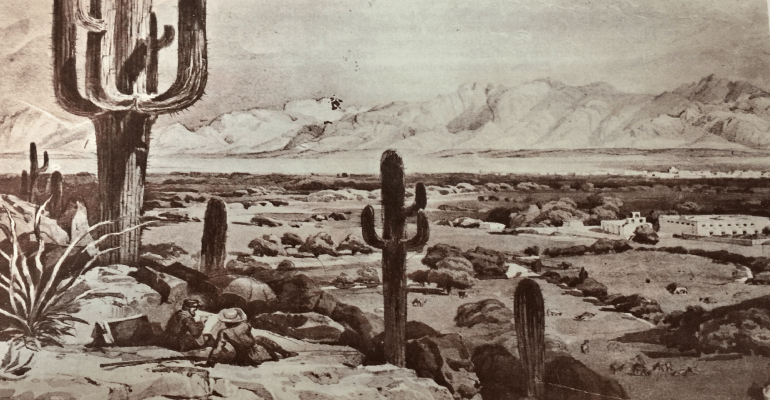
I have witnessed three major changes or “inflection points” within the downtown urban core. The first occurred during the 1950’s when the westside bank of the Santa Cruz, between St Mary’s and 22nd Street, was mined for clay deposits. The red brick buildings around town are a testimony to this building material. Progress superseded Tucson’s history, as old adobe buildings were replaced with fired red bricks. Origins history was negated and as the late Daniel Preston, Vice Chairman of the San Xavier District Tohono O’odham Nation stated, “the remains of our ancestors are found in those red bricks.” Tucson’s Birthplace was further disrespected by locating a landfill on the base of A Mountain and razing the remnants of the old Misión San Agustín and Convento. Collectively, we had developed cultural amnesia.
The second inflection point was the Urban Renewal in the mid 1960’s which resulted in destruction of the barrios that included El Hoyo, Membrillo and parts of Barrio Viejo. These vibrant barrios were the most ethnically diverse neighborhoods in Tucson composed of Latinos, Blacks, and Chinese families. In total 80 acres were razed. The landmarks of my childhood — El Cine Plaza, Meyerson’s White House, Old Pueblo Bus Station, Art’s Hamburger Joint, Pat’s Chili Dogs and Jacome’s disappears before my eyes. Nowadays, Tucsonans lament the loss of the Sonoran adobe rowhouses. Lydia Otero’s book, La Calle Spatial Conflicts and Urban Renewal in a Southwest City, poignantly narrates the story of “urban removal.”
The latest inflection point is the current redevelopment of the urban core. The destruction of the Santa Rita Hotel was personal as I worked as a busboy at the Mountain Oyster Club, a hangout for Southern Arizona cattlemen. The Santa Rita was opened in 1904 by Levi Manning, Charles Shannon and Epes Randolph. It now seems that every vacant lot and old building is scheduled for development; the Infill Incentive District appears to be working. This City policy declared that the urban core was blighted and offered incentives in the form of fee waivers and eight year property tax abatement (GPLET) to developers. Rio Nuevo also leveraged loans and sale tax rebates for extended periods within its district. Many see this as progress and once again, downtown is a happening place.
However, in this process we are losing the uniqueness and history of our community. Multi story buildings with few architectural accents, constructed mostly of stucco and glass, dot the urban landscape. We are creating a transient downtown community composted of student rental housing; densification is the new buzz word. Neighborhood associations have lost their power as developers imposed their will on neighborhoods. Student housing continues unabated as two new projects are planned for on North Fourth Avenue. The Benedictine Monastery is slated for development with the developer setting the parameters. There is an imbalance in the power distribution between residents and developers.
With the redevelopment and downtown amenities perceived as desirable, traditional barrios such as Anita, Kroger Lane, Santa Rosa, Santa Rita, Menlo Park, and Hollywood, are experiencing significant gentrification. Housing in these areas is still affordable and close to the action, but the families moving there are predominately Anglo.
It is time to have a community dialogue to address the questions “Where are we going?” and “How do we deal with gentrification?” We need a community forum, similarly to the 2013 Urban Land Institutes charrettes. We need to restore balance between historical preservation, development and community decision making.
